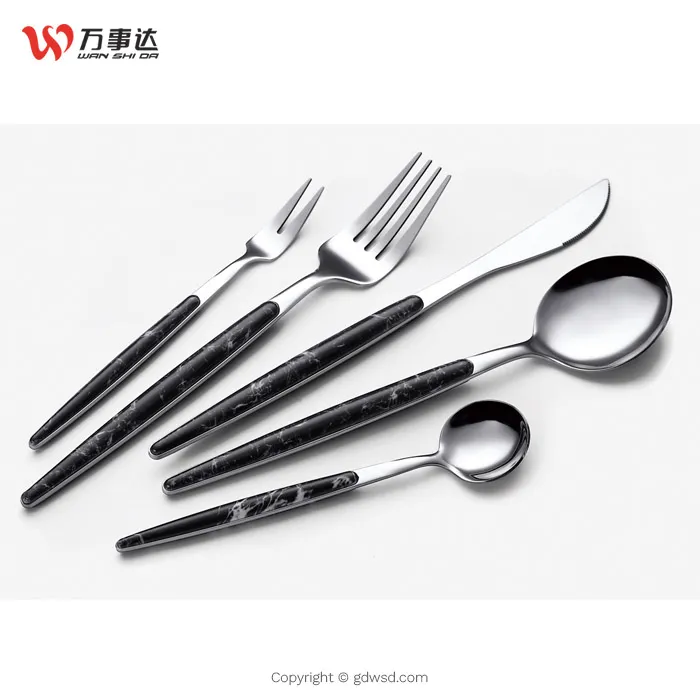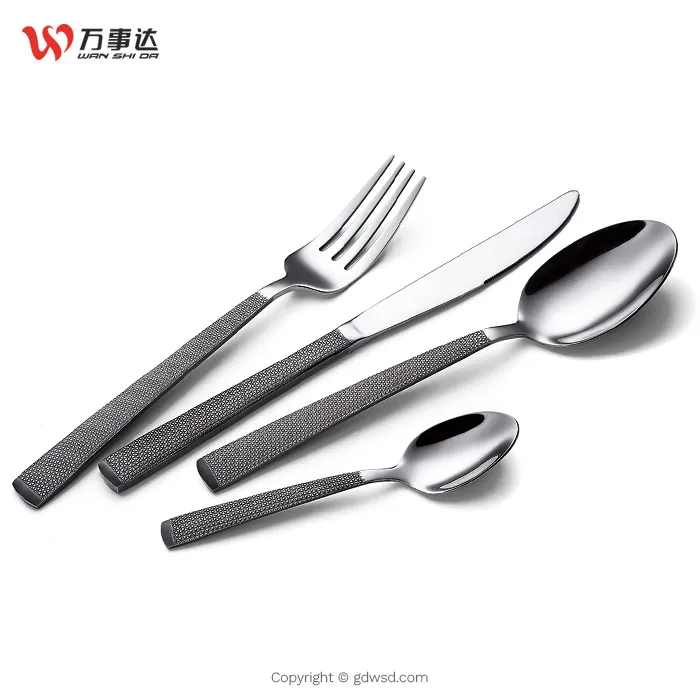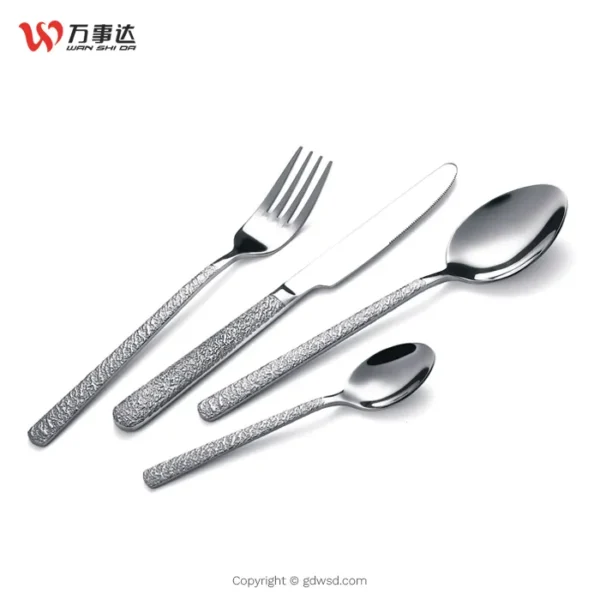Table of Contents:
- Introduction
- Understanding Stainless Steel Flatware
- Factors Leading to Tarnishing of Stainless Steel
- Chemical Reactions Behind the Discoloration
- Effects of Moisture on Stainless Steel Flatware
- Impact of Salt and Acids on Tarnishing
- Environmental Exposure and Oxidation
- Preventive Measures for Tarnished Stainless Steel
- Cleaning and Maintenance of Stainless Steel Flatware
- Removing Tarnish from Stainless Steel
- Polishing Techniques to Restore Shine
- Common Misconceptions about Tarnishing
- Psychological Impact of Tarnished Flatware
- Utilizing Protective Coatings for Longevity
- Conclusion
Why does stainless steel flatware turn black?
Stainless steel flatware is renowned for its durability and resistance to rust, but why does it sometimes turn black? In this article, we will explore the reasons behind the tarnishing of stainless steel flatware, the impact of environmental factors, and effective strategies for preventing and reversing discoloration to keep your flatware looking as good as new.
Introduction
Stainless steel flatware is a popular choice for households due to its strength, hygiene, and sleek appearance. However, over time, this resilient material can develop a black or discolored layer, impacting its aesthetic appeal. Let’s delve into the mechanisms that cause stainless steel flatware to tarnish and lose its shine.
Understanding Stainless Steel Flatware
Stainless steel is a versatile alloy composed of iron, carbon, and other elements such as chromium and nickel. This composition gives stainless steel its corrosion-resistant properties and attractive finish. Stainless steel flatware is designed to withstand daily use and cleaning but is susceptible to tarnishing under certain conditions. Let’s explore the science behind stainless steel flatware and its vulnerability to discoloration.

Factors Leading to Tarnishing of Stainless Steel
Several factors can contribute to the tarnishing of stainless steel flatware, including exposure to moisture, chemicals, and environmental pollutants. Understanding these factors is crucial to prevent and address discoloration effectively. Let’s identify the primary causes of tarnishing in stainless steel flatware.
Chemical Reactions Behind the Discoloration
Tarnishing occurs when the surface of stainless steel reacts with substances in the environment, leading to the formation of a dark oxide layer. This chemical process alters the appearance of the flatware and compromises its aesthetic appeal. By understanding the reactions that cause discoloration, you can take steps to protect your stainless steel flatware from tarnishing.
Effects of Moisture on Stainless Steel Flatware
Moisture is a common culprit in the tarnishing of stainless steel flatware. Prolonged exposure to water or high humidity levels can promote the formation of rust and corrosion on the surface of the flatware. Preventing excessive moisture contact and practicing proper drying techniques are essential to maintain the integrity of your stainless steel utensils.

Impact of Salt and Acids on Tarnishing
Salt and acidic substances can accelerate the tarnishing process in stainless steel flatware. These corrosive agents can react with the metal surface, leading to discoloration and pitting. Avoiding prolonged contact with saltwater, acidic foods, and harsh cleaning chemicals can help preserve the pristine appearance of your flatware.
Environmental Exposure and Oxidation
Environmental factors such as air pollutants, humidity, and temperature fluctuations can contribute to the oxidation of stainless steel flatware. Oxidation reactions cause the metal to darken and lose its shine over time. Proper storage and cleaning practices can mitigate the effects of environmental exposure on your stainless steel utensils.
Preventive Measures for Tarnished Stainless Steel
To prevent tarnishing of stainless steel flatware, adopt preventive measures such as regular cleaning, thorough drying, and protective coatings. By implementing simple yet effective strategies, you can extend the lifespan of your flatware and maintain its lustrous finish. Let’s explore proactive measures to safeguard your stainless steel utensils against discoloration.
Cleaning and Maintenance of Stainless Steel Flatware
Regular cleaning and maintenance are essential to keep your stainless steel flatware in pristine condition. Use mild soap, warm water, and a soft cloth to clean the flatware after each use, and ensure thorough drying to prevent water spots and tarnish. Proper care practices can enhance the longevity and aesthetic appeal of your stainless steel utensils.

Removing Tarnish from Stainless Steel
If your stainless steel flatware has already tarnished, there are methods to remove the discoloration and restore its original shine. From using baking soda paste to commercial stainless steel cleaners, various techniques can help eliminate tarnish and rejuvenate your flatware. Let’s explore effective ways to remove tarnish from stainless steel utensils.
Polishing Techniques to Restore Shine
Polishing is a crucial step in restoring the shine and luster of tarnished stainless steel flatware. Soft cloths, microfiber towels, or specialized polishing compounds can be used to buff the metal surface and eliminate dullness. By employing the right polishing techniques, you can bring back the brilliance of your stainless steel utensils.
Common Misconceptions about Tarnishing
There are several misconceptions surrounding the tarnishing of stainless steel flatware, including the belief that all discoloration is irreversible. By debunking these myths and understanding the true causes of tarnishing, you can take informed steps to prevent and address discoloration effectively. Let’s dispel common misconceptions about tarnished flatware.
Psychological Impact of Tarnished Flatware
The appearance of tarnished flatware can have a psychological impact on individuals, influencing their perception of cleanliness and hygiene. Maintaining pristine and well-maintained stainless steel flatware not only enhances the dining experience but also contributes to a positive mindset. Let’s explore the psychological dimensions of tarnished flatware and its implications.

Utilizing Protective Coatings for Longevity
Applying protective coatings or finishes can enhance the durability and longevity of stainless steel flatware. Protective coatings act as a barrier against moisture, chemicals, and environmental exposure, safeguarding the metal surface from tarnishing. By utilizing protective coatings, you can prolong the lifespan of your stainless steel utensils and preserve their appearance.
Conclusion
In conclusion, the tarnishing of stainless steel flatware is a natural phenomenon caused by environmental factors and chemical reactions. By understanding the reasons behind tarnishing and implementing preventive measures, you can maintain the pristine appearance of your flatware for years to come. Remember to clean, dry, and store your stainless steel utensils properly to prevent discoloration and preserve their shine.




